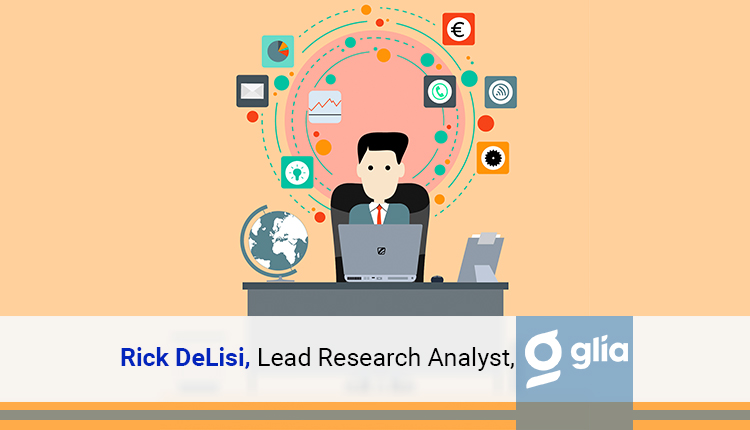The vast majority of financial services leaders in 2025 are now starting to power their customer service interactions using AI — yet a crucial question remains. Do they truly know how well their AI is performing, and more importantly are they maximizing the value of AI? As it turns out, a staggering number of business leaders, despite their confidence in their organization’s AI journey, are not.
That’s the takeaway from a new study. Titled “The New Equation: Redefining Value, Effort and Impact in the AI-Era Contact Center,” the report found that, while AI enthusiasm and usage are high, the maturity, or sophistication, with which it gets applied in the contact center often lags. Leaders are experimenting with customer service AI broadly, but many aren’t yet reaping the full benefits of what mature AI can offer for customers, service agents and managers alike.
Read More on Fintech : Global Fintech Interview With Justin Meretab, Co‑Founder and CEO of Layer
Key study takeaways
So, what’s holding teams back — and where is the value leaking out? The study surfaces five friction points that explain why customer service AI can often feel promising in theory but become uneven in practice.
Adoption outpaces adaptation
Leaders have moved fast: 75% are using or scaling contact center AI. But adaptation hasn’t kept pace. Too many programs deploy tools without rethinking roles, metrics, ownership and governance. That’s how AI ends up as bolt-on automation rather than an operating model change. The risk is clear: shallow wins and stalled scale.
Measurement gap undermines ROI
Here’s a paradox: 86% of leaders say AI is crucial, yet only 27% measure its strategic impact. And fewer than 30% report getting full value. What this shows: leaders need a disciplined way to measure AI’s customer service effectiveness that captures customer, employee, economic and strategic value.
The contact center isn’t leading AI projects
AI is changing how work gets done, yet only 16.5% say their contact center — the function closest to customer value — leads AI initiatives. When IT or operational leaders operate independently, programs often prioritize tools and cost savings over broader strategic outcomes such as loyalty, conversion and first-contact resolution.
Disconnected systems hurt
A third of leaders cite lack of agent proficiency or capacity as a barrier to getting full ROI from their contact center AI, and many point to disconnected systems, poor knowledge access and high employee effort. That’s why AI can reduce handle time on paper but miss the mark in practice. The lesson is simple: the path to better customer experience runs through better employee experience. Fixing workflows, surfacing knowledge and streamlining handoffs allows AI to do what it does best — and lets people focus on what providing a human touch in situations where that is critical to customer loyalty.
Strategic intelligence is overlooked
Contact centers record the most comprehensive product feedback a company will ever get. Yet nearly 40% of leaders underestimate feedback-based strategic intelligence, and only about a quarter measure it. That’s a missed growth lever. When AI organizes this trove of valuable data, interactions can inform product fixes, marketing clarity and even fraud or risk decisions.
Savings aren’t being reinvested strategically
AI creates massive efficiencies, but it’s what organizations do with those efficiencies that truly matters. Applying savings straight to the bottom line can drive positive results for the short-term, but the organizations that pull ahead in the long run are those that put their savings to work. They convert time saved into value created — raising hiring standards, investing in employee development, redeploying staff to proactive activities and more.
Steps to accelerate AI maturity
Now for some good news: each friction point in customer service AI has a practical fix. Here are seven moves any bank or credit union can make now to accelerate AI maturity — and convert enthusiasm into durable ROI.
1. Align AI initiatives to business outcomes
Start with clarity. For every use case, specify whether the goal is experience, efficiency, risk or growth — and design requirements, workflows and handoffs to serve that end.
2. Target the bottlenecks
AI thrives in clean workflows — but disconnected systems, hard-to-find knowledge, manual wrap-up and inconsistent authentication hinder its effectiveness. Remove friction, and both efficiency and experience rise together — leading to fewer transfers, faster answers and less rework.
3. Break down silos
Coordinate voice and digital so AI and humans operate as one system — one with shared context, smooth handoffs and clear ownership. Customers shouldn’t have to start over to switch channels or escalate.
4. Build inclusive AI governance
Create a cross-functional forum — contact center/CX, IT, operations, compliance, data, etc. — to decide use cases, model choices, data handling and risk thresholds.
5. Position AI for enablement, not replacement
Automate routine tasks so people can do what they do best: complex problem-solving, empathy, onboarding and relationship-building. Communicate the talent strategy upfront. When teams know AI is there to extend capacity and elevate roles, adoption rises and outcomes improve.
-
Rethink the metrics
Retire single-threaded KPIs as your sole north stars. Set measurement baselines, review on a fixed cadence and course-correct regularly. What gets measured — and discussed — gets improved. And the implementation of AI enables companies to have access to every keystroke and every word every customer has ever shared with your company.
Closing the ROI gap
The study surfaces a stark paradox: AI is here, but maturity isn’t. At least yet. Financial institutions that modernize measurement, align ownership with the contact center and reinvest capacity into people will close the AI ROI gap fastest.
With responsible deployment, strong governance and outcome-first design, AI can free contact centers from being solely service endpoints — turning them instead into engines of loyalty, efficiency and strategic insight.
Catch more Fintech Insights : The CFO’s New Analyst: Using Generative AI for Strategic Financial Modeling
[To share your insights with us, please write to psen@itechseries.com ]
